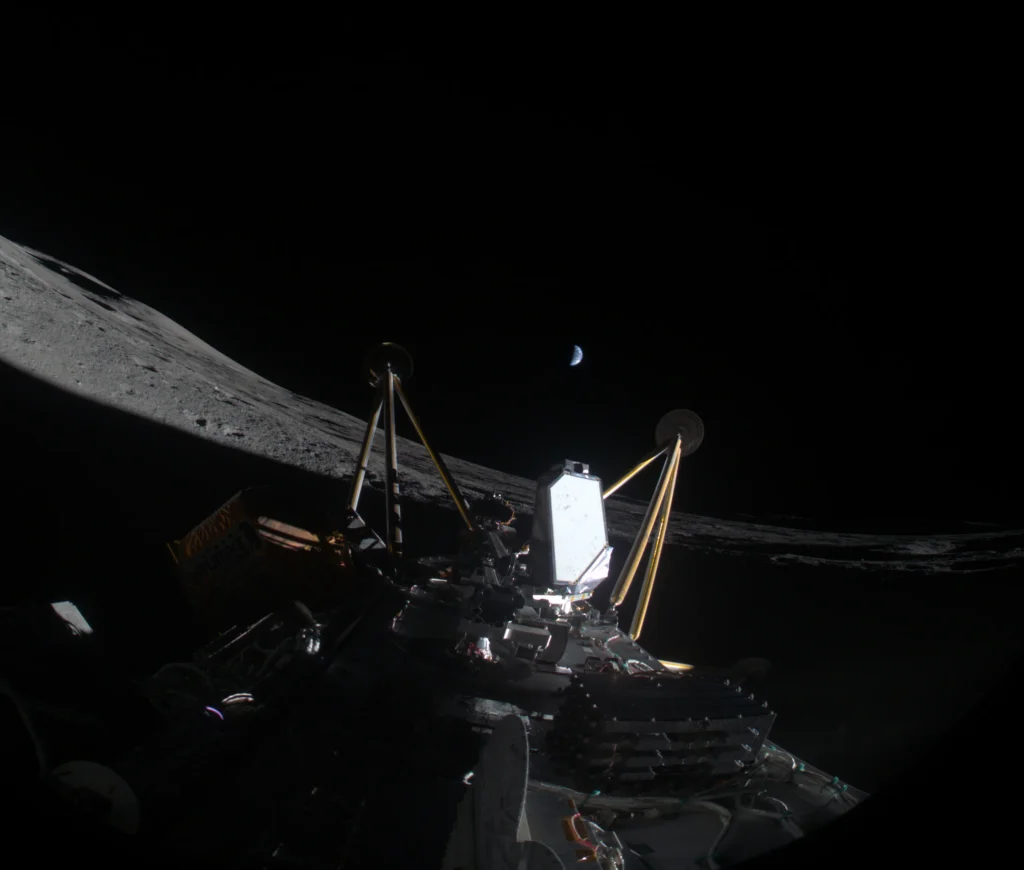
🚀 Introduction: A Giant Leap for Lunar Resource Exploration
NASA Lunar Drill Technology, part of the ambitious PRIME-1 (Polar Resources Ice Mining Experiment 1) mission, has successfully demonstrated its ability to operate in the extreme conditions of the Moon. Despite the brief duration of the IM-2 mission, the drill system and accompanying instruments performed flawlessly, offering critical insights for future Artemis missions aiming to establish sustainable human presence on the lunar surface.
🌕 PRIME-1 Mission: Paving the Way for Artemis Exploration
The NASA Lunar Drill Technology was deployed through Intuitive Machines’ IM-2 mission, launched on February 26, 2025, from Kennedy Space Center’s Launch Complex 39A. The mission, part of NASA’s Commercial Lunar Payload Services (CLPS) initiative under the broader Artemis campaign, aimed to demonstrate how lunar resources can be extracted and analyzed using in-situ technologies.
The IM-2 Nova-C lunar lander, called Athena, carried two primary instruments:
- TRIDENT (The Regolith and Ice Drill for Exploring New Terrain) – A 1-meter augering drill built by Honeybee Robotics.
- MSOLO (Mass Spectrometer Observing Lunar Operations) – A commercial off-the-shelf spectrometer modified for the Moon’s harsh environment.
Together, these tools sought to probe the Moon’s regolith and analyze it for water and other gases that could one day fuel rockets or provide breathable air for astronauts.
🌑 Touchdown Near the Moon’s South Pole
Athena landed on March 6, 2025, approximately 400 meters from its intended landing site, Mons Mouton, near the Moon’s South Pole. Unfortunately, the lander came to rest on its side inside a crater, limiting its ability to recharge using solar panels and abruptly ending the mission after about 10 hours of operation, far shorter than the planned 10 days.
However, NASA teams remained optimistic. Janine Captain, co-principal investigator for PRIME-1, stated:
“The PRIME-1 mission proved that our hardware works in the harshest environment we’ve ever tested it in… this is a huge step forward as we prepare to send astronauts back to the Moon and build a sustainable future there.”
🛠️ How NASA Lunar Drill Technology Works
At the core of the mission was the TRIDENT drill, engineered to:
- Penetrate up to 1 meter into the Moon’s surface.
- Utilize rotary and percussive actuators for effective drilling.
- Stop at specified depths and deposit samples for analysis.
Meanwhile, MSOLO performed detailed scans of the gases released during drilling. Although most detected gases were anthropogenic—such as propellants or Earth-origin water vapor—the ability of the system to capture and identify these substances was a crucial technical success.
Julie Kleinhenz, lead systems engineer for PRIME-1, emphasized:
“Once we got to the lunar surface, TRIDENT and MSOLO both started right up, and performed perfectly… From a technology demonstrations standpoint, 100% of the instruments worked.”
🧪 Why This Technology Matters: In-Situ Resource Utilization (ISRU)
The NASA Lunar Drill Technology is more than just a drilling mechanism—it’s part of a long-term vision for in-situ resource utilization (ISRU). ISRU involves using local materials at exploration sites to reduce dependence on Earth-based supply chains. It’s essential for:
- Producing water and breathable oxygen.
- Generating rocket propellant.
- Building lunar infrastructure (e.g., landing pads, habitats).
Kleinhenz, who has spent nearly two decades advancing ISRU systems, underscored the significance:
“In-situ resource utilization is the key to unlocking long-term exploration, and PRIME-1 is helping us lay this foundation for future travelers.”
📊 Technology Demonstration Success Despite Mission Cut Short
Despite being limited to 10 hours, the PRIME-1 team achieved several milestones:
- TRIDENT completed all intended mechanical operations: rotation, extension, hammering motion, and core heating.
- MSOLO ran multiple gas scans, collecting valuable data on instrument behavior in real lunar conditions.
- Over 6.6 GB of data was transmitted back to Earth for ongoing analysis.
This level of success from a brief and compromised mission demonstrates the robustness of NASA Lunar Drill Technology, reinforcing confidence in future lunar resource missions.
🌘 Future Implications for Artemis and Beyond
With Artemis missions preparing to send astronauts to the lunar surface, the technology demonstrated by PRIME-1 becomes foundational for:
- Establishing lunar bases using local regolith.
- Producing oxygen and hydrogen for crew life support and fuel.
- Reducing mission mass and cost by eliminating the need for certain Earth-supplied materials.
NASA’s long-term goal is to apply these lessons to missions on Mars and beyond. The ability to adapt tools like TRIDENT and MSOLO for different planetary environments could prove instrumental in achieving sustainable space exploration.
💡 Innovations from TRIDENT and MSOLO
Here are some of the standout technical achievements:
- Lightweight and low-power design ideal for robotic landers.
- Percussive and rotary functions allow drilling through varied regolith textures.
- Real-time thermal monitoring for efficient operation in cold lunar soil.
- Mass spectrometry adapted for lunar exosphere, offering insight into the Moon’s volatile elements.
🧬 What Comes Next?
NASA engineers and scientists are now analyzing the collected data, especially TRIDENT’s performance logs and MSOLO’s spectral readings. Their goals include:
- Understanding lunar regolith structure and strength.
- Enhancing instrument durability for long-duration missions.
- Improving data interpretation of gas signatures.
The next steps involve refining these technologies and preparing for more robust field tests on future CLPS deliveries—eventually culminating in their integration into Artemis crewed missions and lunar base construction.
🌌 Conclusion: A Solid Step Toward a Lunar Future
Though short-lived, the IM-2 mission was a resounding success for NASA Lunar Drill Technology. PRIME-1 showcased the power of TRIDENT and MSOLO, affirming their readiness for future lunar operations. As NASA advances toward its Artemis goals, this mission represents a critical step in turning the Moon into a functional hub for long-term human presence in space.
The Moon isn’t just a destination—it’s a proving ground. And with technologies like PRIME-1, NASA is ensuring that humanity arrives prepared.